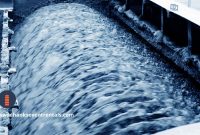Comprehensive Guide to Water Treatment Methods for Industrial, Commercial, and Residential Applications
Water is essential for life, and ensuring its quality is vital for health, industry, and the environment. Different settings—whether industrial, commercial, or residential—require different approaches to water treatment to meet their specific needs. This guide explores the various water treatment methods tailored to each of these areas, providing a deep dive into the technologies, processes, and best practices that ensure water is clean, safe, and suitable for its intended use.
Introduction to Water Treatment
Water treatment is the process of improving the quality of water to make it acceptable for a specific end-use, whether it’s for drinking, industrial processes, medical purposes, or other applications. The objective is to remove contaminants or reduce their concentration so that the water becomes safe and beneficial.
The Importance of Water Treatment
Water treatment is crucial because untreated water can carry harmful contaminants, including bacteria, viruses, chemicals, and heavy metals, which pose serious health risks. For industries, improper water treatment can lead to machinery corrosion, product contamination, and regulatory penalties. In commercial settings, poor water quality can affect customer satisfaction and business operations, while in residential areas, it impacts the health and well-being of inhabitants.
Water Treatment Methods for Industrial Applications
Industries often require large volumes of water, which must meet strict quality standards. The treatment processes for industrial water are complex and varied, depending on the specific industry and its water usage needs.
1. Filtration
Filtration is one of the most basic and essential methods in industrial water treatment. It involves removing suspended particles, sediments, and impurities from water through a physical barrier. This can range from simple sand filters to advanced membrane filtration systems.
- Sand Filtration: Uses a bed of sand to remove particulates.
- Membrane Filtration: Employs membranes like microfiltration (MF), ultrafiltration (UF), nanofiltration (NF), and reverse osmosis (RO) to eliminate smaller particles, bacteria, and even dissolved substances.
2. Chemical Treatment
Chemical treatment involves adding chemicals to the water to remove impurities or neutralize harmful elements.
- Coagulation and Flocculation: Chemicals like alum are added to water, causing suspended particles to clump together into larger particles (flocs), which are then removed by sedimentation.
- Disinfection: Chemicals such as chlorine, chloramines, or ozone are used to kill harmful microorganisms.
- pH Adjustment: Acids or bases are added to neutralize the water’s pH, preventing corrosion or scaling in industrial systems.
3. Biological Treatment
This method utilizes biological processes to treat water, particularly wastewater.
- Aerobic Treatment: Oxygen is supplied to bacteria that decompose organic matter in the water.
- Anaerobic Treatment: In the absence of oxygen, bacteria break down organic matter, producing methane, which can be harnessed as an energy source.
4. Advanced Oxidation Processes (AOPs)
AOPs involve generating highly reactive species, like hydroxyl radicals, which degrade organic pollutants in water. This method is particularly effective for treating industrial wastewater containing hard-to-remove contaminants.
Water Treatment Methods for Commercial Applications
Commercial water treatment focuses on providing safe and aesthetically pleasing water for use in businesses like hotels, restaurants, hospitals, and offices. The goal is to ensure water meets health standards and enhances the customer experience.
1. Softening
Water softening is a common process in commercial settings, particularly in areas with hard water. Hard water, which contains high levels of calcium and magnesium, can cause scaling in plumbing and appliances, leading to higher maintenance costs.
- Ion Exchange: This method replaces calcium and magnesium ions with sodium or potassium ions, effectively softening the water.
2. UV Disinfection
Ultraviolet (UV) disinfection is a chemical-free method used to kill bacteria, viruses, and other microorganisms in water.
- UV Light Exposure: Water passes through a UV light chamber, where the light disrupts the DNA of microorganisms, rendering them inactive and safe.
3. Carbon Filtration
Carbon filtration is used to remove chlorine, chloramines, and organic compounds that can affect the taste, odor, and appearance of water.
- Activated Carbon Filters: These filters have a large surface area that adsorbs impurities, improving the quality of the water for drinking and cooking.
4. Reverse Osmosis (RO)
RO is a popular method in commercial settings for providing high-purity water, especially in the food and beverage industry.
- RO Systems: These systems use a semi-permeable membrane to remove dissolved salts, chemicals, and impurities, producing clean and safe water.
Water Treatment Methods for Residential Applications
In residential areas, water treatment focuses on providing safe drinking water and protecting household appliances from the adverse effects of poor water quality.
1. Point-of-Use (POU) Filters
POU filters are installed at specific locations in the home, such as the kitchen sink, to provide purified water for drinking and cooking.
- Carbon Filters: These are commonly used to remove chlorine, sediment, and volatile organic compounds (VOCs) from tap water.
- RO Systems: Similar to commercial applications, residential RO systems provide high-purity water for home use.
2. Whole-House Water Filtration Systems
These systems treat all the water entering the home, ensuring that it is clean and safe for all uses.
- Sediment Filters: Remove large particles like sand, silt, and rust from the water.
- Water Softeners: Use ion exchange to prevent hard water issues throughout the house.
- UV Disinfection: Protects against microbial contamination in the home’s water supply.
3. Distillation
Distillation is a method that involves boiling water and condensing the steam back into liquid, leaving contaminants behind.
- Distillers: These are particularly effective at removing a wide range of contaminants, including heavy metals, bacteria, and viruses.
Choosing the Right Water Treatment Method
Selecting the appropriate water treatment method depends on several factors:
- Water Quality: The existing quality of the water, including the presence of specific contaminants, determines the treatment method.
- End-Use Requirements: Different applications require different levels of water purity.
- Budget: Cost considerations, both for installation and maintenance, play a crucial role in decision-making.
- Environmental Impact: Some methods are more environmentally friendly than others.
Conclusion
Water treatment is essential for ensuring the availability of safe and clean water in industrial, commercial, and residential settings. By understanding the various treatment methods available, you can make informed decisions that meet your specific water quality needs. Whether you’re treating water for a factory, a hotel, or your home, the right approach will not only protect health and safety but also improve efficiency and sustainability.



